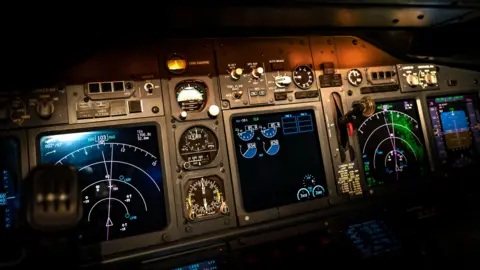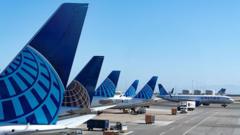Despite its reputation for safety after more than a decade of operation, the 787 Dreamliner has come under fire following the tragic crash of Air India Flight 171, which claimed at least 270 lives shortly after takeoff. Investigators are currently delving into the flight recorder data to uncover the cause of the incident.
Boeing's 787 had established a stellar safety record, transporting over a billion passengers worldwide without incident for nearly 15 years prior to the crash. However, the aircraft has been marred by allegations from whistleblowers regarding quality control issues, with some claiming that substandard airplanes had been permitted in service—a claim vigorously denied by Boeing.
The Dreamliner, which began development in the early 2000s, aimed to meet the soaring fuel efficiency demands of airlines, especially following the economic impact of the September 11 attacks. Instead of producing larger aircraft for major hubs, Boeing innovated a model designed for direct, long-range routes, opting for advanced materials and cutting-edge technology to enhance efficiency and reduce noise.
However, shortly after entering service, the 787 faced serious issues, notably with its lithium-ion batteries that prompted a worldwide grounding in 2013. While operations later improved, widespread production complications continued to trouble the aircraft's assembly lines, particularly at Boeing’s South Carolina facility, which has drawn criticism from industry analysts.
Among the most alarming claims are those from former employees regarding failed quality control processes at Boeing. John Barnett, a deceased former quality manager, alleged that employees were pressured to overlook safety protocols, risking the integrity of aircraft components—a theory supported by subsequent investigations by the Federal Aviation Administration (FAA).
More recently, whistleblower Sam Salehpour raised concerns about assembly shortcuts and structural deficiencies that may compromise safety. He, along with previous whistleblowers, painted a grim picture of a workplace culture prioritizing production speed over passenger safety.
Despite these allegations, Boeing maintains that the 787's design and production practices have been validated by rigorous FAA standards and inspections. Aviation experts remain divided on the potential impact of these issues on long-term safety, with some asserting that any critical problems would have already surfaced during the aircraft's extensive operational history.
As the industry mourns the loss of lives from Flight 171, the ongoing investigation is critical to understanding the future of the 787 and ensuring the aviation community can restore confidence in the aircraft before passengers board their next flight.
Boeing's 787 had established a stellar safety record, transporting over a billion passengers worldwide without incident for nearly 15 years prior to the crash. However, the aircraft has been marred by allegations from whistleblowers regarding quality control issues, with some claiming that substandard airplanes had been permitted in service—a claim vigorously denied by Boeing.
The Dreamliner, which began development in the early 2000s, aimed to meet the soaring fuel efficiency demands of airlines, especially following the economic impact of the September 11 attacks. Instead of producing larger aircraft for major hubs, Boeing innovated a model designed for direct, long-range routes, opting for advanced materials and cutting-edge technology to enhance efficiency and reduce noise.
However, shortly after entering service, the 787 faced serious issues, notably with its lithium-ion batteries that prompted a worldwide grounding in 2013. While operations later improved, widespread production complications continued to trouble the aircraft's assembly lines, particularly at Boeing’s South Carolina facility, which has drawn criticism from industry analysts.
Among the most alarming claims are those from former employees regarding failed quality control processes at Boeing. John Barnett, a deceased former quality manager, alleged that employees were pressured to overlook safety protocols, risking the integrity of aircraft components—a theory supported by subsequent investigations by the Federal Aviation Administration (FAA).
More recently, whistleblower Sam Salehpour raised concerns about assembly shortcuts and structural deficiencies that may compromise safety. He, along with previous whistleblowers, painted a grim picture of a workplace culture prioritizing production speed over passenger safety.
Despite these allegations, Boeing maintains that the 787's design and production practices have been validated by rigorous FAA standards and inspections. Aviation experts remain divided on the potential impact of these issues on long-term safety, with some asserting that any critical problems would have already surfaced during the aircraft's extensive operational history.
As the industry mourns the loss of lives from Flight 171, the ongoing investigation is critical to understanding the future of the 787 and ensuring the aviation community can restore confidence in the aircraft before passengers board their next flight.





















